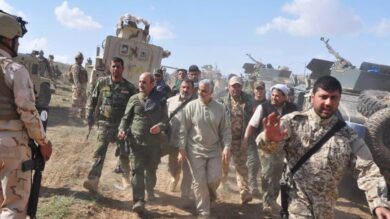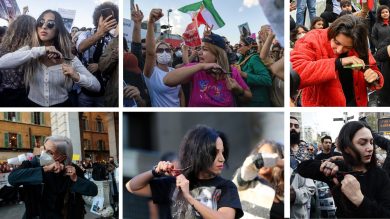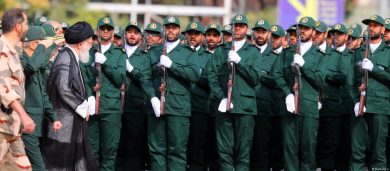The Islamic Revolutionary Guard Corps (IRGC), Iran’s most powerful paramilitary and intelligence organization, plays a central role in the regime’s war against women. From enforcing compulsory hijab laws to leading violent crackdowns on peaceful protests, the IRGC has built an entire system of fear, surveillance, and repression aimed at silencing and controlling women who demand basic freedoms.
While the IRGC claims to defend Islamic values, its actions consistently violate international human rights standards. Women in Iran face daily harassment, arrests, imprisonment, and psychological torture—all backed and often executed by the IRGC and its intelligence affiliates. This article explores how the IRGC systematically targets women through its gender-based policies, highlights stories of resistance, and outlines the need for international action.
1. The IRGC’s Role in Enforcing Patriarchy
The IRGC was created in 1979 to protect the Islamic Republic and its ideology. Over time, it has transformed into a massive institution with military, economic, intelligence, and political power. One of its foundational roles is to enforce the regime’s interpretation of Islamic values—including strict gender roles and control over women’s behavior.
Key areas of control:
• Compulsory Hijab Enforcement: Through Basij forces (a paramilitary group under the IRGC), women are monitored in public for “improper veiling.” This includes arrests, fines, or being taken to “re-education centers.”
• Surveillance of Women Activists: The IRGC monitors social media, follows digital footprints, and taps phones to identify women speaking against the hijab law, gender discrimination, or human rights abuses.
• Criminalization of Dissent: Women who participate in protests or post about freedom are charged with vague crimes like “promoting indecency” or “threatening national security.”
2. Tactics of Fear: Arrests, Torture, and Surveillance
The IRGC uses fear as its primary tool. Women who challenge the regime are met with a ruthless system of retaliation.
Arrests and Interrogation
Women are often arrested during:
• Peaceful protests (e.g., “Girls of Revolution Street”)
• Public refusal to wear the hijab
• Sharing videos without hijab on social media
• Attending or organizing civil rights meetings
Once arrested, they are taken to detention centers run or monitored by the IRGC, where they face harsh conditions, including:
• Solitary confinement
• Sleep deprivation
• Forced confessions under duress
• Sexual harassment and threats of rape
• Psychological abuse (e.g., threats to harm family)
Digital Surveillance
The IRGC’s cyber division tracks women’s online activity. They infiltrate chat apps, monitor encrypted conversations, and use facial recognition to identify women in protest footage.
• Example: Many women were arrested after the 2022 protests sparked by Mahsa Amini’s death because the IRGC tracked their Instagram posts and Telegram channels.
3. Case Studies: Women Targeted by the IRGC
Narges Mohammadi
• Status: Human rights activist and Nobel Peace Prize laureate
• Targeted for: Campaigning against the death penalty and exposing torture in prisons
• Tactics used: Imprisoned multiple times, denied medical treatment, isolated in harsh prison conditions
Nasrin Sotoudeh
• Status: Prominent lawyer defending women’s rights
• Targeted for: Representing women who removed hijab in public
• Tactics used: Sentenced to 38 years in prison and 148 lashes
Sepideh Gholian
• Status: Labor rights activist
• Targeted for: Documenting workers’ protests
• Tactics used: Subjected to torture, forced confession, re-arrest after speaking out upon release
These women are just a few among many who have been systematically abused by the IRGC’s repressive system.
4. Women in Prison: A System of Abuse
Prisons such as Evin and Qarchak are infamous for holding female political prisoners.
These prisons, often overseen or influenced by the IRGC, are designed to break the spirit of resistance.
Conditions Inside:
• Overcrowding and lack of hygiene
• Denial of legal representation
• Psychological torture and threats against family
• Beatings and solitary confinement
• Mixing political prisoners with violent offenders as a form of intimidation
These prisons serve not only as punishment but as warning signs to other women.
5. Beyond the Hijab: Broader Control Over Women’s Lives
The IRGC’s war on women goes beyond controlling what they wear. It extends into nearly every aspect of life:
• Workplace Restrictions: Women are pressured out of leadership roles, with IRGC-linked institutions dominating employment sectors.
• Education Censorship: Female students and professors are punished for feminist discourse or activism.
• Cultural Suppression: Women artists, singers, and filmmakers are banned, censored, or arrested.
• Legal Inequality: The IRGC helps reinforce laws that give men power over women in marriage, divorce, and custody.
This network of control reinforces a gender hierarchy that the IRGC aggressively maintains.
6. Women’s Resistance and the Power of Defiance
Despite the repression, Iranian women have become the face of the resistance:
• Public hijab removals have become a widespread act of defiance.
• Street protests, often led by young women, have rocked cities since 2022.
• Hashtags like #WomenLifeFreedom and #MahsaAmini have gained global traction.
• Exiled women journalists and activists continue to speak out and organize from abroad.
Their resistance shows that the IRGC may control the state, but it cannot control the will for freedom.
7. Global Response and What Must Be Done
The international community must recognize the IRGC’s role in the systemic abuse of women and respond accordingly.
Key Actions:
• Designate the IRGC as a terrorist organization globally. Many Western countries have done this due to its human rights abuses and links to terrorism.
• Sanction individual commanders and institutions involved in the suppression of women.
• Support Iranian women activists through asylum, legal aid, and digital security tools.
• Amplify Iranian women’s voices via media, academic, and political platforms.
• Demand accountability in international courts for crimes against women, including torture and sexual violence.
Conclusion
The IRGC’s war on women is a war against freedom, equality, and the soul of Iranian society. Its tactics of fear—arrests, torture, surveillance, and propaganda—are designed to crush resistance. But Iranian women are fighting back with unmatched courage.
Their fight is not just about the hijab; it’s about owning their lives, voices, and futures. As they continue to defy one of the most repressive forces in the region, the world must stand with them—not with silence, but with action.
Join Our Newsletter!
Stay informed with the latest updates, news, and ways to take action in the fight for justice and global security. Sign up now to get updates delivered straight to your inbox!





